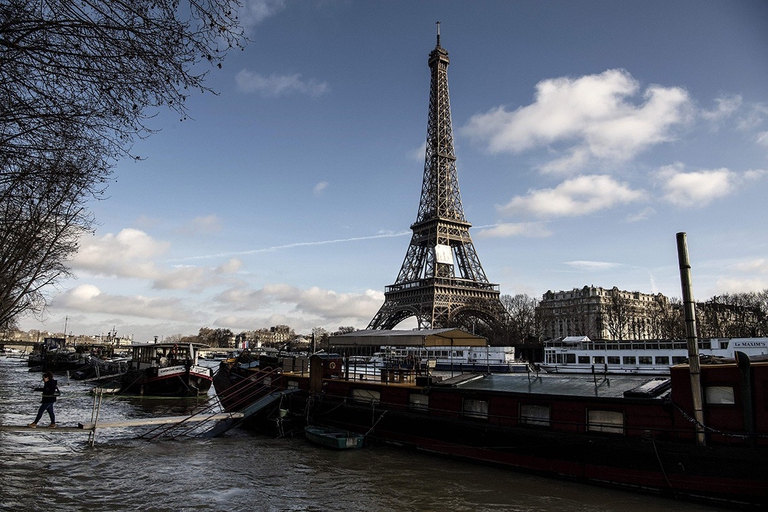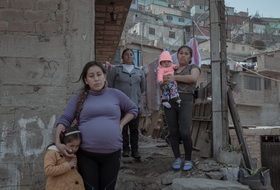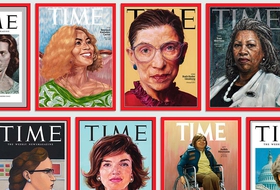
One in three women have suffered physical or sexual violence. With contributions from Europe, Africa, Asia and Latin America, we look at how this shadow pandemic affects every corner of the world.
Climate change poses a risk for millions. However, women are the most vulnerable to its negative consequences: a few simple considerations by the Italian Climate Network help us perceive the global implications of this.
It’s now an established fact that climate change is a risk factor for the life and fundamental rights of millions of people in ways that reflect social and economic inequalities within their communities. Less obvious is that women are among the groups most exposed to the consequences of this phenomenon and some simple considerations help perceive the global significance of this fact.
Read more: Climate change is a fact and women are tackling it
It suffices to say that in developing countries women represent 43 per cent of the agricultural workforce, with peaks of up to 70 per cent in sub-Saharan Africa, and for various cultural reasons they also occupy other strategic roles in accordance with local social dynamics. The responsibilities traditionally reserved for them range from preparing food to educating children. Moreover, it is women who are mainly engaged in agricultural activities and subsistence farming, cultivating small plots of land close to villages; it’s women who make use of nearby water sources and manage the cascade of its uses in the domestic environment, from food preparation to personal hygiene. For example, the dramatic reduction in the surface area of Lake Chad in central-north Africa has forced women of the region’s nomadic tribes to travel to increasingly distant sites to fetch water.
The issue doesn’t only concern water and agriculture but extends to natural disasters, which are occurring more frequently in various parts of the world. The consequences of a flood, for example, impact the socio-economic dimensions, such as food scarcity and health emergencies, to which women are more exposed. In other words, women are more vulnerable to poverty and less well-positioned that men to react to its consequences on account of their duties relating to childcare and the fact that they’re held in lower regard in relation to work. This holds true in absolute terms, even when certain events occur in developed countries. Hurricane Katrina, which devastated New Orleans in 2005, highlighted the lack of preparation even of an “advanced” nation such as the United States in the face of a meteorological catastrophe, which left behind not only a trail of destruction but also huge social distress, especially for women and in even more so in the African-American community.
A study by Jacquelyn Litt, professor of Women’s and Gender Studies at Rutgers University in New Jersey, showed how poverty soared after the cataclysm occurred, and that over half the families in these conditions were composed of single mothers. These conclusions may, in fact, extend to any other city in the world exposed to risks related to rising sea levels as a result of climate change.
Returning to the case of agricultural communities, which are most exposed to climate risks, it should be noted that despite their fundamental role in the process of food production, women are in fact denied access to credit for technological upgrading and adaptation mechanisms that might improve their conditions. The possible solutions are quite obvious but aren’t easily implemented. Investing in the productive capacity of women in view of attaining a level of sustainable agriculture wouldn’t only mean improving the environmental future of the planet, but moving women towards a situation in which they’re capable of fully exercising their individual rights while contrasting poverty and malnutrition. Moreover, when women become involved in decision-making processes regarding climate issues, evidence shows that they make a positive difference. Thanks to their knowledge and experience in managing natural resources, they’re suited to developing viable responses to environmental disasters, including in safeguarding affected communities, post-disaster reconstruction as well as identifying and accessing new urgently needed resources.
In recognition of such dynamics, the United Nations has adopted a process of reflection on gender issues and climate change within the UN Framework Convention on Climate Change (UNFCCC), focusing on the role of women in both adaptation to current global warming and mitigation of such phenomena with a medium and long-term perspective. With the creation of UN Women, specifically dedicated to gender equality, in July 2011 the aim of the UN explicitly became to promote and support the incorporation of a gender perspective in policies and national action plans concerning sustainable development and climate change.
Read more: At a disappointing COP25 overall, the Gender Action Plan is approved
Positive notes from #Cop25Madrid2019 – References to #humanrights in the #LossAndDamage text! And the #GenderActionPlan got adopted! @WGC_Climate @ItalianClimate @WEDO_worldwide @WECF_INT pic.twitter.com/3lG8rZeIWd
— Chiara Soletti (@ChiaraSoletti) December 15, 2019
The outcome of the international debate are a broad range of actions: from women’s involvement in decision-making processes that may affect the climate at the local and global level, to the financial and technological promotion of business initiatives for women, to supporting agriculture and craftwork, capable of safeguarding social stability starting at the basic family level, and consequently, the quality of the environment. The whole discourse thus forms part of the broader issue of women’s empowerment. It’s worth noting that the latter term has been adopted in international parlance, thereby enhancing its implications and extending its scope from the sphere of human rights to the even broader debate on global environmental protection.
Siamo anche su WhatsApp. Segui il canale ufficiale LifeGate per restare aggiornata, aggiornato sulle ultime notizie e sulle nostre attività.
![]()
Quest'opera è distribuita con Licenza Creative Commons Attribuzione - Non commerciale - Non opere derivate 4.0 Internazionale.
One in three women have suffered physical or sexual violence. With contributions from Europe, Africa, Asia and Latin America, we look at how this shadow pandemic affects every corner of the world.
The Istanbul Convention against gender-based and domestic violence marks its tenth anniversary. We look at what it is, who its signatories are, and what the future might hold.
European Commission President Ursula von der Leyen reminded us of the gravity of violence against women around the world, and of the Istanbul Convention’s utmost importance.
President Erdoğan has pulled Turkey out of the Istanbul Convention, key in the fight against gender violence, claiming that it favours the LGBT community rather than family values.
Violence against women in Peru has increased as a result of Covid-19 lockdowns. 14,912 people were reported missing from January to November 2020, more than half of them minors and 64 per cent women. People have been confined to their homes for months, many forced to endure poor physical, economic and social conditions. A situation that
Joys Estefani Qqueccaño Huamani, 24, disappeared from her rural community in Peru on 9 October. Her family began looking for her independently of the authorities and despite the resistance of relatives of Joys Estefani’s ex-partner Arturo Ccana Condori, 32, charged with committing violence against her on 28 September, eleven days before Joys Estefani disappeared. Photos
Costa Rica celebrated its first same-sex marriage when two women, Alexandra Quiros and Dunia Araya, celebrated their wedding: an “extraordinary moment”.
The pandemic and its restrictions are affecting everyone, without exceptions. However factors like housing, income inequalities, gender, access to technology and working conditions are influencing how people experience the health crisis.
Time magazine’s 100 Women of the Year project sheds light on influential women’s stories, from Amelia Earhart to Greta Thunberg. A selection of some of the greats for International Women’s Day.








